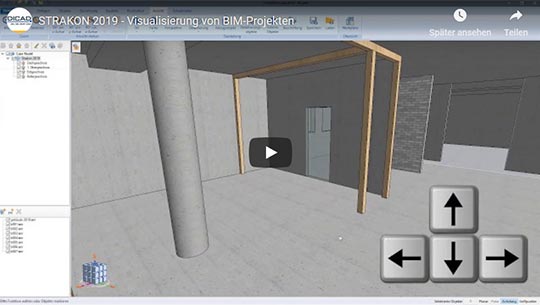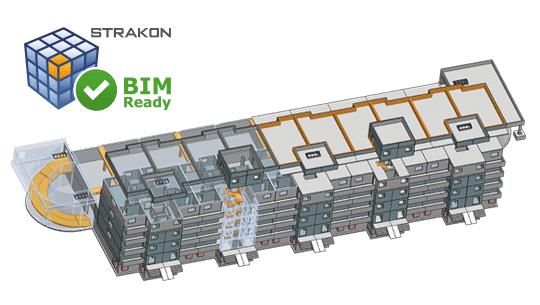STRAKON 2023 - Customers Determine Content of the New Version!
DICAD programs hard to the needs of the practice! Information from numerous customer conversations, results of working group meetings and requests from the customer group lead to a variety of new functionalities in STRAKON 2023.
The more than 30-member development team of DICAD programs the BIM CAD software STRAKON continuously and at high speed. As a result, the structural planners working with STRAKON have many new opportunities every year, which contribute to a continuous increase in productivity of the offices.
STRAKON - THE BIM-CAD for structural planners
DICAD sees itself as the manufacturer of a BIM-CAD platform for structural planners, which is optimally integrated into BIM process chains. Thus, with STRAKON, customers use a tool that can be used in all areas of the structural design. Construction of buildings, industrial construction, bridge construction, civil engineering, prefabricated construction and architectural planning for structural planners are the main areas of application. In addition to reinforced concrete planning with the excellent reinforcement design in STRAKON, other materials, such as steel or wood, can also be used without problems. STRAKON has also fully exploited its strengths as a modeling tool in previous performance phases.
Process thinking and data exchange on the highest level
The DICAD team thinks in processes and therefore aligns STRAKON with the practice. This concerns data (such as terrain models, IFC models, drawings, ERP data, layout data, survey data, point clouds, data from BIM databases, data from embedded part vendors, etc.) that have been created in advance and that will be transferred to STRAKON. Even after processing with STRAKON, the process chains are followed up and data are handed over to further systems. This applies, for example, to drawing data, model data, evaluations, 3D printers, handover to ERP and AVA systems, dimensioning data, production data for formwork construction, circulatory systems, lasers, beamers, plotters, mat welding systems, bending machines and data exchange with BIM collaboration platforms.
3D reinforcement design directly in the model
One focus of the development of STRAKON 2023 was on the new generation of reinforcement of the Cube reinforcement. Here, it was primarily a matter of increasing the planning speed and of increasing the re-use of reinforcement situations once they have been installed. A large number of new functions have been included in STRAKON 2023. These additionally accelerate reinforcement planning in STRAKON. Furthermore, the connection to mat welding systems was further automated. A direct coupling to the system now provides immediate feedback as to whether the mesh is producible. Thus, only producible data are transferred.
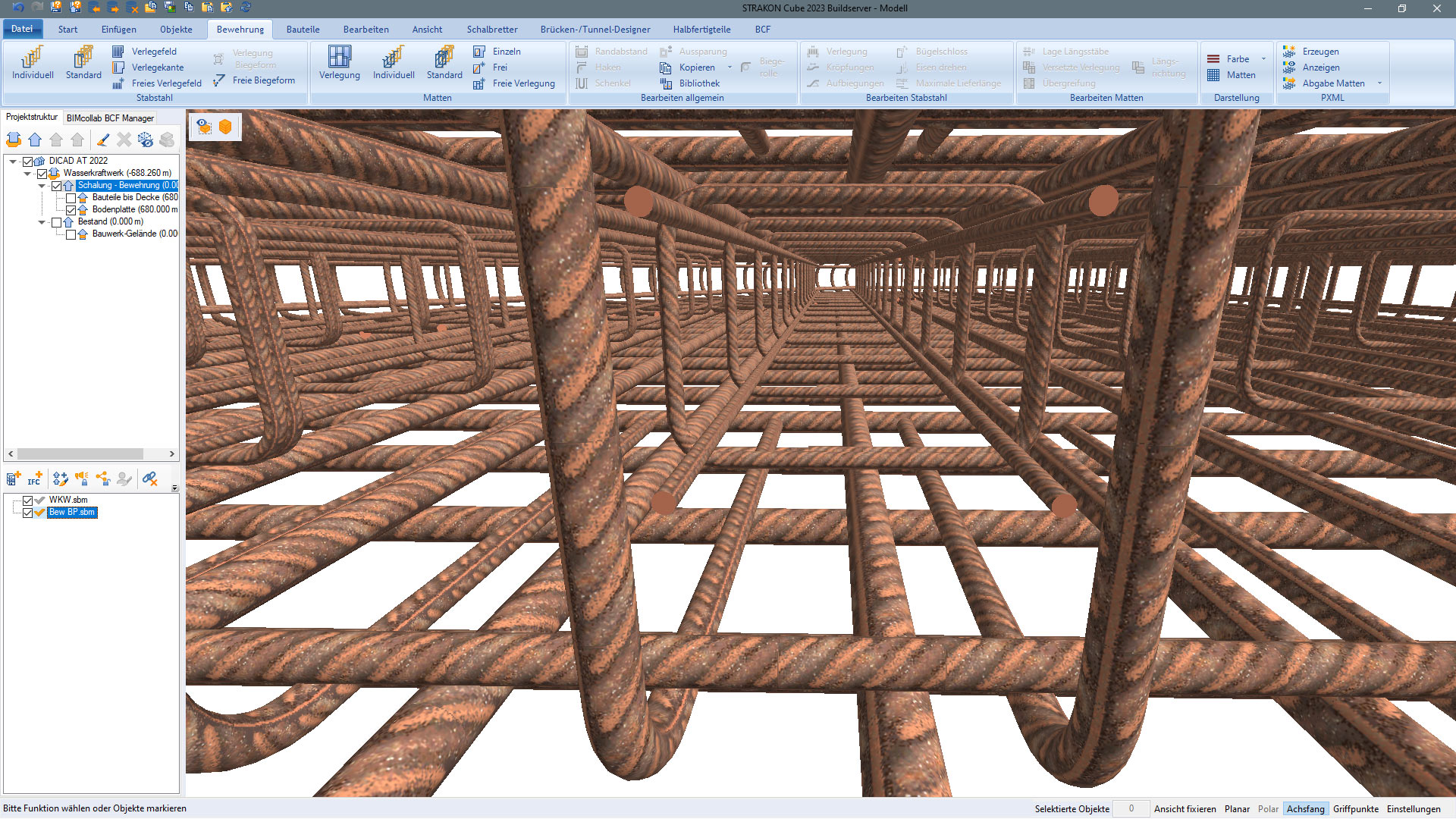
Automated mold making
STRAKON's formwork module leads the market. The automated planning of formwork as well as the individual adaptation possibilities lead to a very slim and, above all, rapid process of accelerating the formwork construction by a multiple with the help of this tool and a transfer to a formwork milling machine. In STRAKON 2023, screw and Clamex connections are now also planned automatically. Bent shuttering boards can also be transferred to the mill.
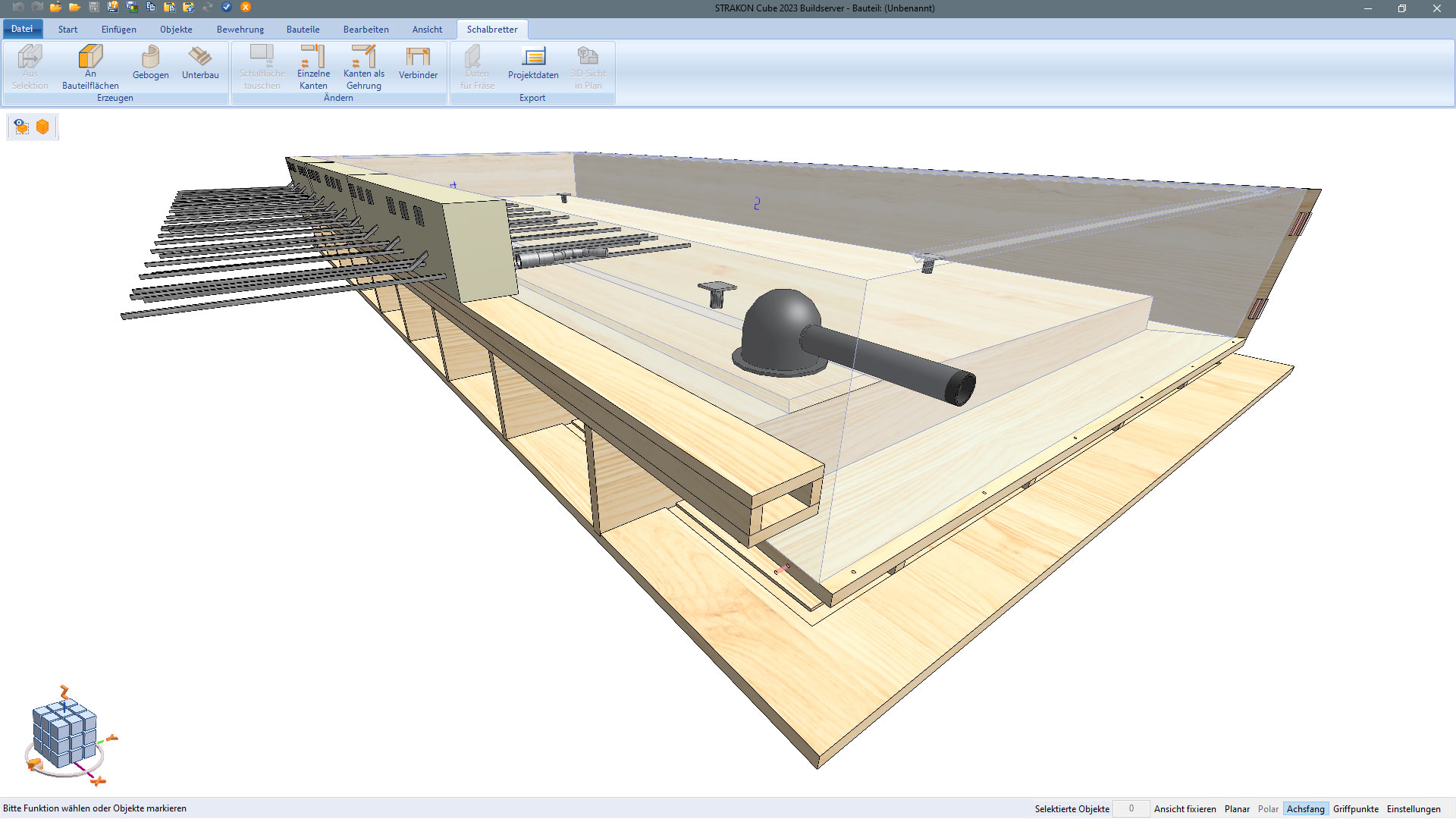
Bridge construction parameterized
The bridge/tunnel designer inside STRAKON has been simplified in such a way that additional curves, for example for widening of the bridge, can now be planned more easily and more quickly. With STRAKON, bridge planning, from design to execution, parametrically (even of complex bridges) is very well possible.
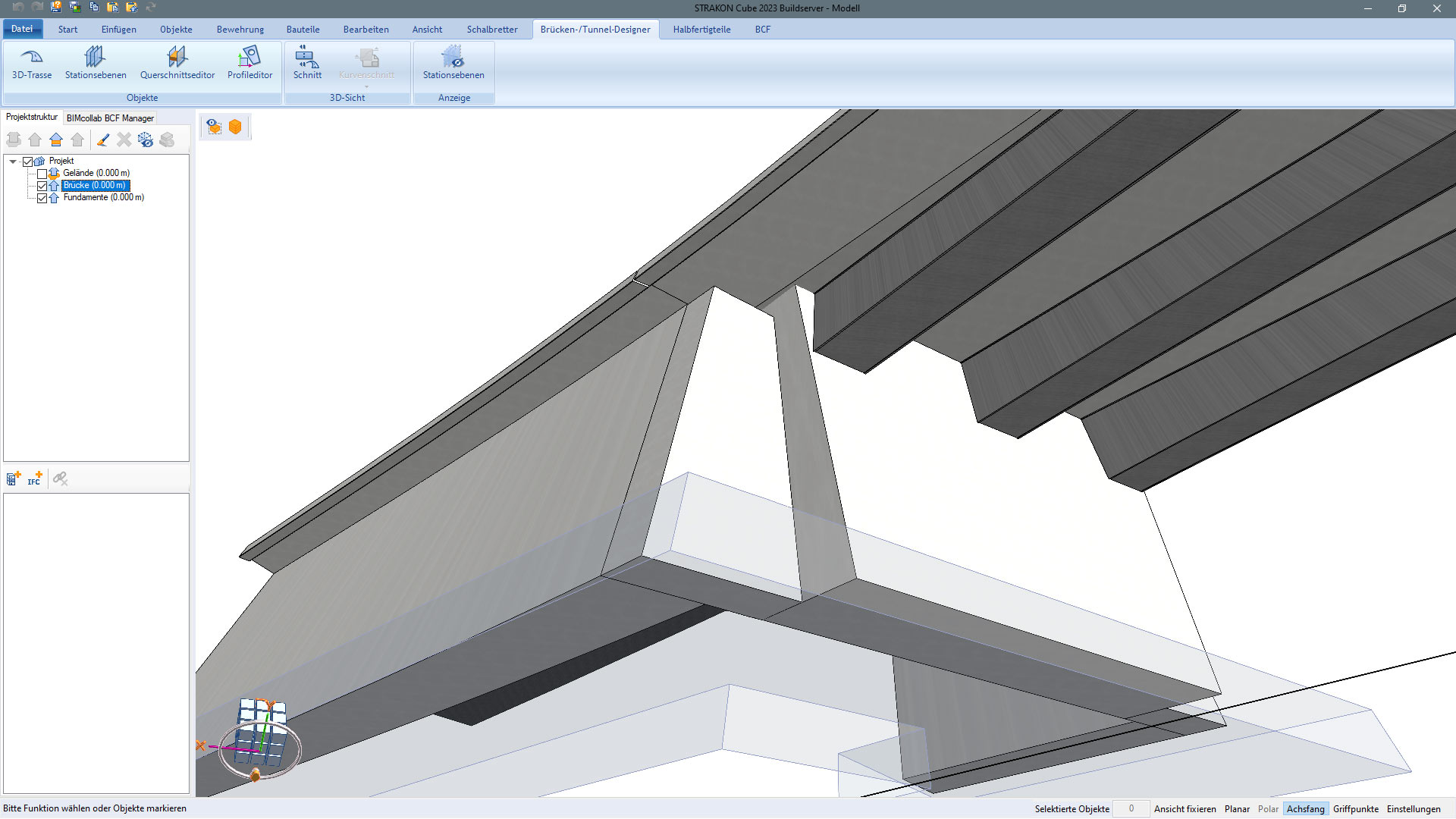
Modeling Tools
The modeling possibilities in STRAKON have also been expanded. Many new functions help to make models even more comfortable to create. An example of this is the new function "component Along Path". This can be used well, for example, in the area of infrastructure construction, in the planning of noise protection walls. The individual components rotate along the path to the respective bisector and are copied either in direct distance or along the path. This function can also be used very well in the planning of bridge railings. The copy function has also been extended to allow objects and components to be moved with a minimum distance. The surfaces have been further developed for evaluations and automated presentation in the drawing. You can now define multiple surfaces on one surface at the same time.

Semi precast parts
The planning of semi precast parts was further refined in STRAKON 2023. This has allowed the automated scheduling of slabs and walls to be increased even further. The complete new development in this area sets standards and not only excites STRAKON users.
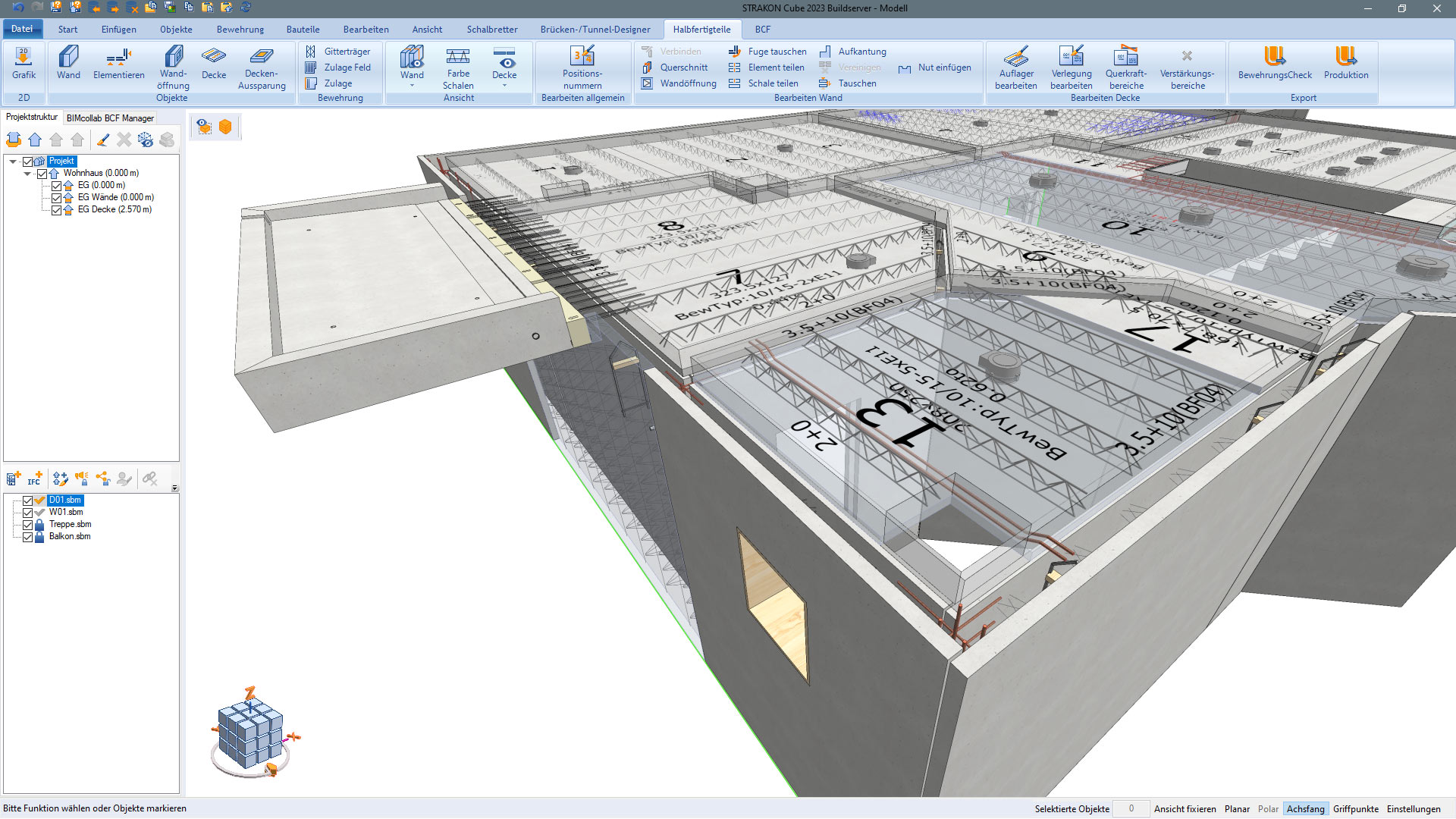
Embedded parts
The possibilities of entering embedded parts in the project and cleverly too administer are constantly being optimized. In addition, there is now the laying of embedded parts which, at the end, entails an automatic shortening in the case of longitudinal components. The contracted instance can also be extended again if, for example, the part geometry changes. The quantity embedded parts of the STRAKON-sized manufacturer's units has further increased. These are available on the DICAD website in the Download Center. STRAKON thus provides a large quantity of embedded parts that the user can use directly in STRAKON. The different forms of representation in the drawing are equally stored.

Join Our Construction Experts in a Direct Exchange via a Free Online Live Presentation From STRAKON!
Ask for an appointment right here.
STRAKON Application Areas
- Construction Engineering
- Structural Design
- Structural Precast Parts
- Semi Precast Parts
- Architecture for Structural Engineers
- BIM
- Interfaces
More about BIM Planning
Experience STRAKON in Action
Why STRAKON from DICAD for structural engineers?
BIM planning
Visualization of BIM projects (DE)
Watch VideoBIM - Building Information Modeling
What is BIM?
BIM stands for Building Information Modeling. This planning process focuses in particular on cost security, adherence to schedules, quality improvement and sustainability.
Learn more about the topic "BIM":

